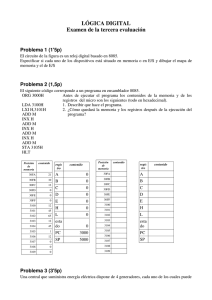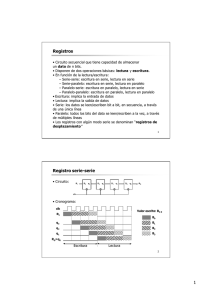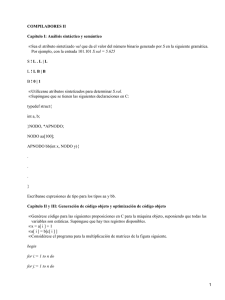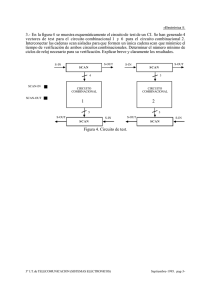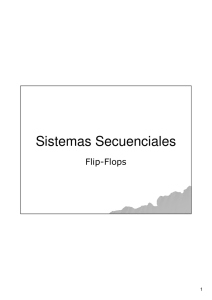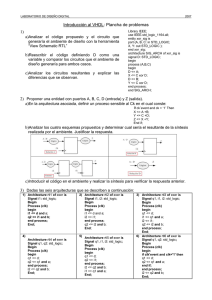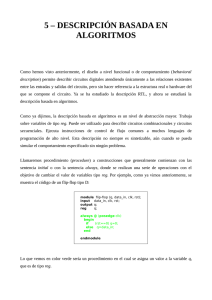Clase lab 2
Anuncio
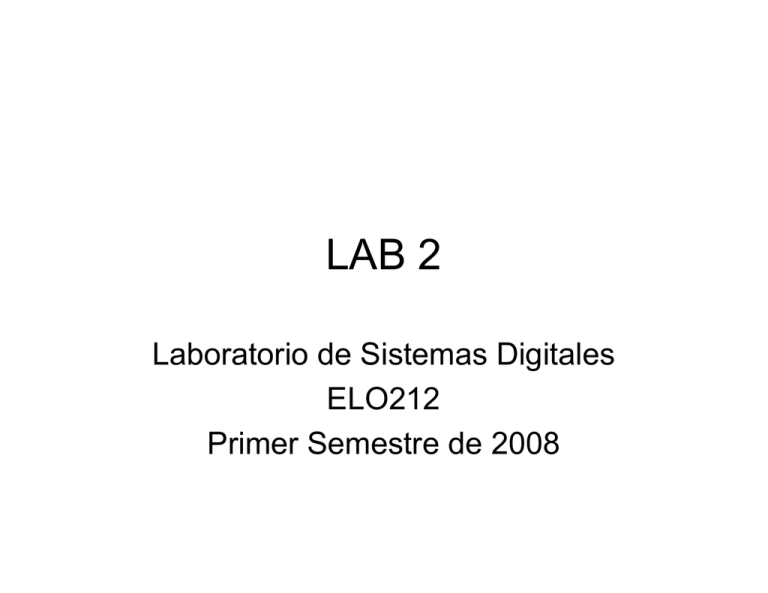
LAB 2
Laboratorio de Sistemas Digitales
ELO212
Primer Semestre de 2008
Objetivos Generales
• Usar un osciloscopio de señal mixta
– sincronización, disparo, nivel de disparo, y
base de tiempo
•
•
•
•
Realizar un diseño digital
Aplicar prueba estática y dinámica
Usar parámetros y macros en Verilog.
Medir tiempos de retardo en componentes
Agilent 54621D
Sincronización (1)
Sincronización (2)
FlipFlop JK (1)
CLR’
J
K
Q(k+1)
Q’(k+1)
0
x
x
0
1
1
0
0
Q(k)
Q’(k)
1
1
0
1
0
1
0
1
0
1
1
1
1
Q’(k)
Q(k)
FlipFlop JK (2)
module flipflopJK(J, K, CLK, CLRn, Q, Qn);
input J, K, CLK, CLRn;
output Q, Qn;
reg Q, Qn;
always @(negedge CLRn or negedge CLK)
begin
if (!CLRn) begin Q <= 0; Qn <= 1; end
else
case ({J,K})
1: begin Q <= 0; Qn <= 1; end
...
default: begin Q <= Q; Qn <= Qn; end
endcase
end
endmodule
Contador (1)
CLK
CLR
QA
QB
QC
QD
Contador (2)
Contador M bits
module counter(CLK, CLR, Q);
parameter M = 3;
input CLK, CLR;
output reg [M:0] Q;
// fill in
endmodule
Circuito Activado por Cuentas
(1)
Cuenta:
Salida:
0
1
2
3
4
5
6
7
Circuito Activado por Cuentas
(2)
module actcuenta(x, w);
parameter M = 3;
parameter A = 3;
parameter B = 5;
input [0:M] x;
output w;
// fill in
endmodule
En el Laboratorio
•
•
Verificar (vía ModelSim) circuitos
diseñados en la parte previa
Medir retardos de compuertas
– FlipFlop JK
– Inversor 7404
•
Implementar el circuito activado por
cuentas
– Usar ecuaciones reducidas!!!
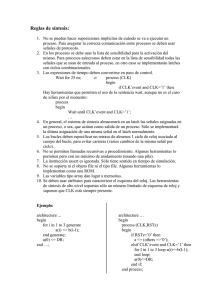
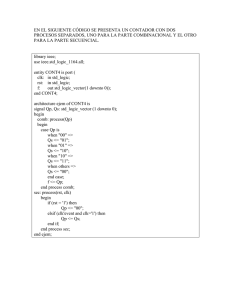

![Duración 2:00 h 1.- [3 puntos] Inicialmente el registro A del circuito](http://s2.studylib.es/store/data/006054581_1-5bf5edf798f4d3df94d79777115bdac4-300x300.png)
